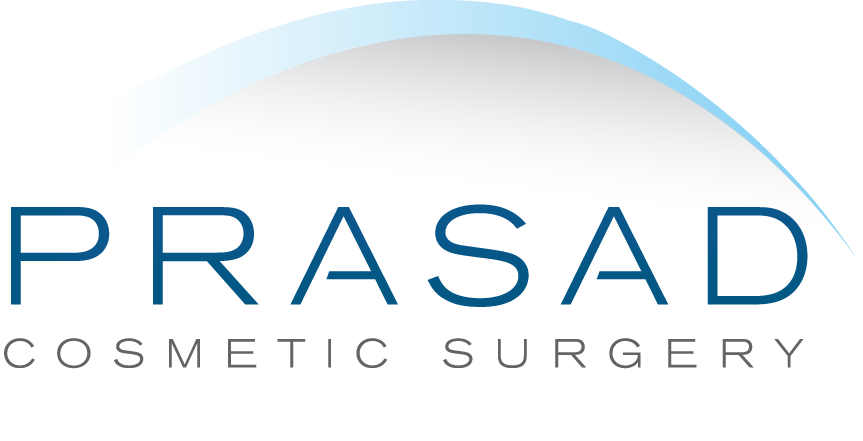Lines around the mouth, or perioral area, is a common concern I frequently hear about. These lines can remain visible even without movement, or become more pronounced with muscle activity. I’ll discuss some cosmetic treatments that can address these particular concerns.
I’m Dr Amiya Prasad. I’m a Board Certified Cosmetic Surgeon and Fellowship Trained Oculofacial Plastic and Reconstructive Surgeon. I’ve been in practice in Manhattan and Long Island for over 20 years. I have a lot of experience performing facelifts, upper eyelid surgery, eyelid ptosis surgery, Asian eyelid surgery, under eye bag surgery, hair restoration and as well as working with injectable fillers.
The most common types of lines that occur around the mouth area are vertical lip lines, nasolabial folds, and mesolabial folds. These folds occur due to a decrease in facial volume from loss of fat and soft tissue. A general reduction in skin quality as we age can also contribute to this.
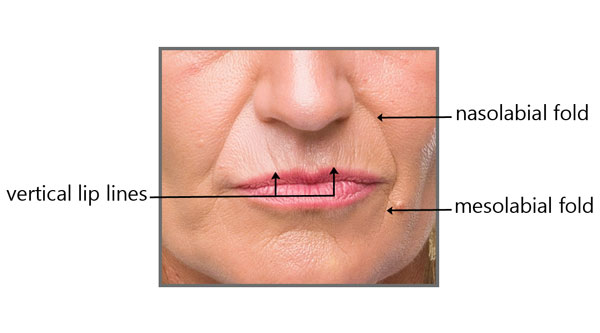
There are 3 common types of lines around the mouth: vertical lip lines, nasolabial folds, and mesolabial folds.
Vertical Lip Lines
Vertical lip lines are pronounced creases that occur above the upper lip when the lips are pursed. This is caused by the activity of the orbicularis oris muscle. To resolve this, a neurotoxin like Botox is used to reduce muscle activity. This then reduces the depth of the creases, making them less visible.
Botox typically takes about 3 days to take effect, with the full effects manifesting in about 2 weeks. At the 2-week mark, I evaluate the results and see if any enhancement is needed. The effects of Botox usually subsides over several months, so maintenance treatments are advised every 4 months.
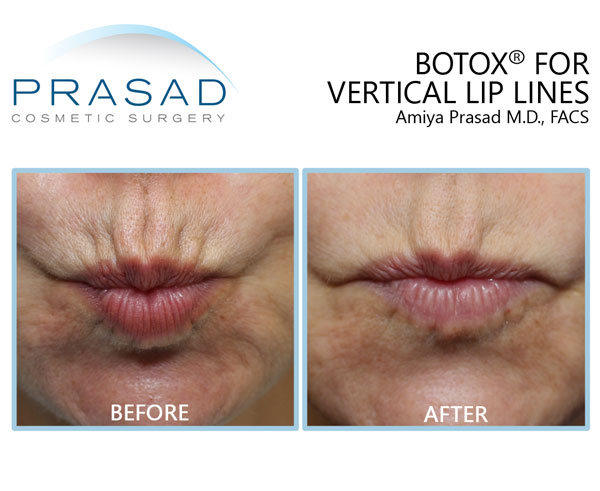
Botox can help vertical lip lines, which can fully take effect after 2 weeks, and subsides over several months.
Volume loss in the fat and soft tissue layers beneath the skin are also responsible for vertical lip lines. Volume loss reduces projection above the lip, resulting in lines becoming more prominent. These lines can be filled and smoothened out with the help of a filler like Restylane or Juvederm. Filler treatment can be performed in a few minutes and can last anywhere between 6-12 months.
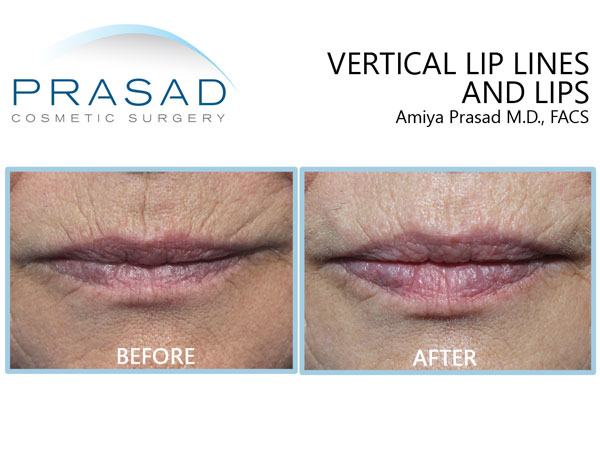
Hyaluronic acid fillers can improve vertical lip lines. Treatment can be performed in a few minutes and can last anywhere between 6-12 months.
Diminishing skin quality is another known cause for vertical lip lines. As we age, our skin naturally loses collagen and elasticity. To combat this, treatments like laser resurfacing or radiofrequency heating can be employed. These treatments induce a controlled injury response that stimulates collagen production and tightens skin.
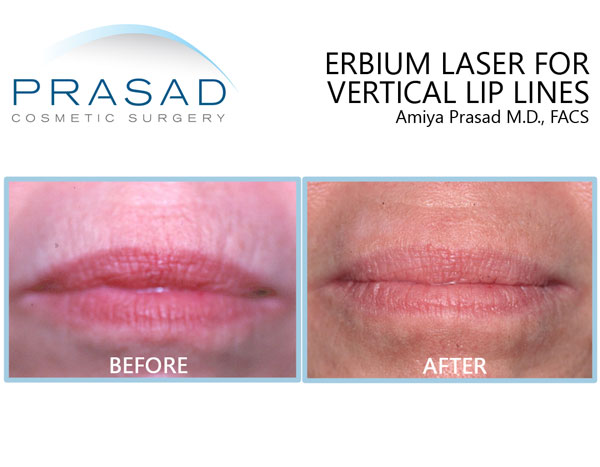
Laser treatment can be used to resurface the skin above the upper lip, tighten the skin, and stimulate collagen to improve the depth of vertical lines.
Nasolabial Folds
Nasolabial folds, or parentheses lines, bracket both sides of the nose and mouth areas. Nasolabial folds become more pronounced as age-related volume loss progresses. To address this, I perform a procedure called Structural Volumizing. With this method, thicker hyaluronic acid fillers are strategically placed in the cheek and mid-face areas at the bone level.
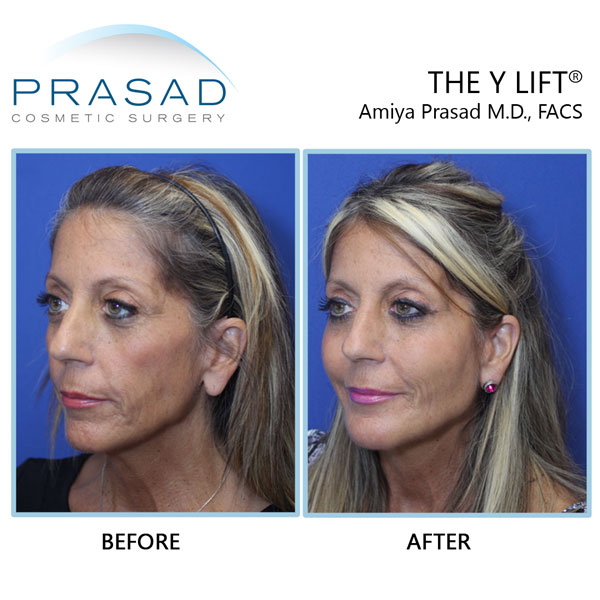
Dr. Amiya Prasad treats nasolabial folds with Structural Volumizing, also called Y Lift, where thicker fillers are placed at the bone level, and underneath the muscle layer.
As a surgeon with extensive experience with facial implants and facial fracture repair, the Structural Volumizing technique came naturally to me. Instead of placing implants on top of the bone, I worked on the technique of placing thick, long-lasting fillers instead.
Conventional filler placement puts the filler just below the skin layer. Placing the filler deeper restores volume where it is most needed. This method also prevents the filler from shifting around under the skin. Deeper placement also avoids the typical “doughy” appearance that is commonly seen or pillow face from fillers. This particular method produced results that can last for 1-2 years.
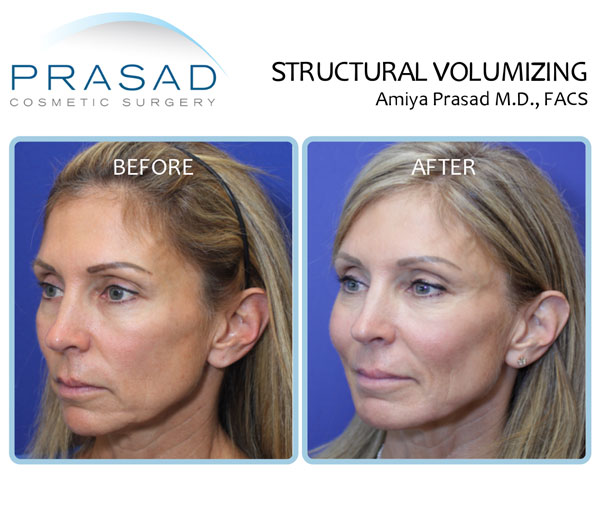
Deeper placement of filler for nasolabial folds can last for 1-2 years.
Mesolabial Folds
Lines that begin at the corner of the mouth and go downwards are called mesolabial folds, or marionette lines. Similar to nasolabial folds, these lines are also caused by volume loss and are often treated together using the same methodology. Aside from hyaluronic acid fillers, Radiesse is often used in this area, but it’s not made of hyaluronic acid, but of calcium hydroxyapatite, which is similar to bone. The difference is that calcium hydroxyapatite cannot be dissolved or reversed like hyaluronic acid filler. The effects of Radiesse last about a year, while thicker hyaluronic acid fillers like Juvederm Voluma can last about 2 years.
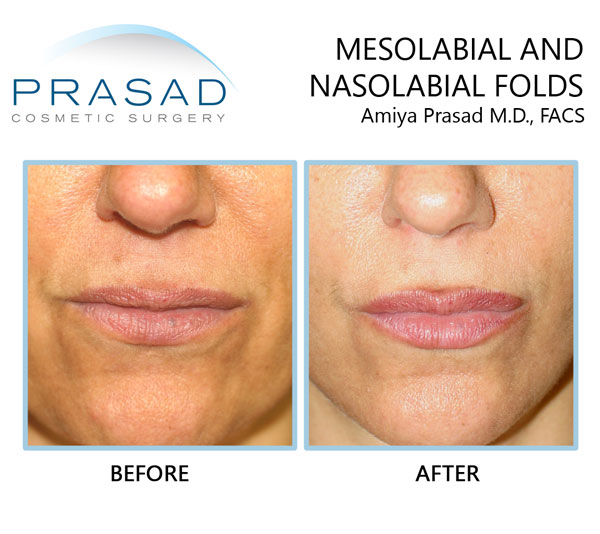
Fillers like Juvederm Ultra Plus and Juvederm Voluma are treatment options for marionette lines.
Mesolabial folds are addressed by placing volume in the jawline area by means of Structural Volumizing. As we age, loss of definition in the jawline affects the appearance of the mouth. Adding volume to this area improves definition and makes the overall contour more continuous and angular.
Generally, filler treatments take only minutes to perform. Minimal swelling can occur but usually resolves quickly. Patients can even undergo this treatment shortly before an important event like a wedding. My patient care policy post-treatment includes regular check-ups to monitor results and see if any additional enhancements are needed.
In my opinion, filler placement should be treated as seriously as facial cosmetic surgery. I believe that once you’ve entered below the skin, the procedure is already considered invasive. As such, it should be handled with the same standards one uses for all invasive procedures.
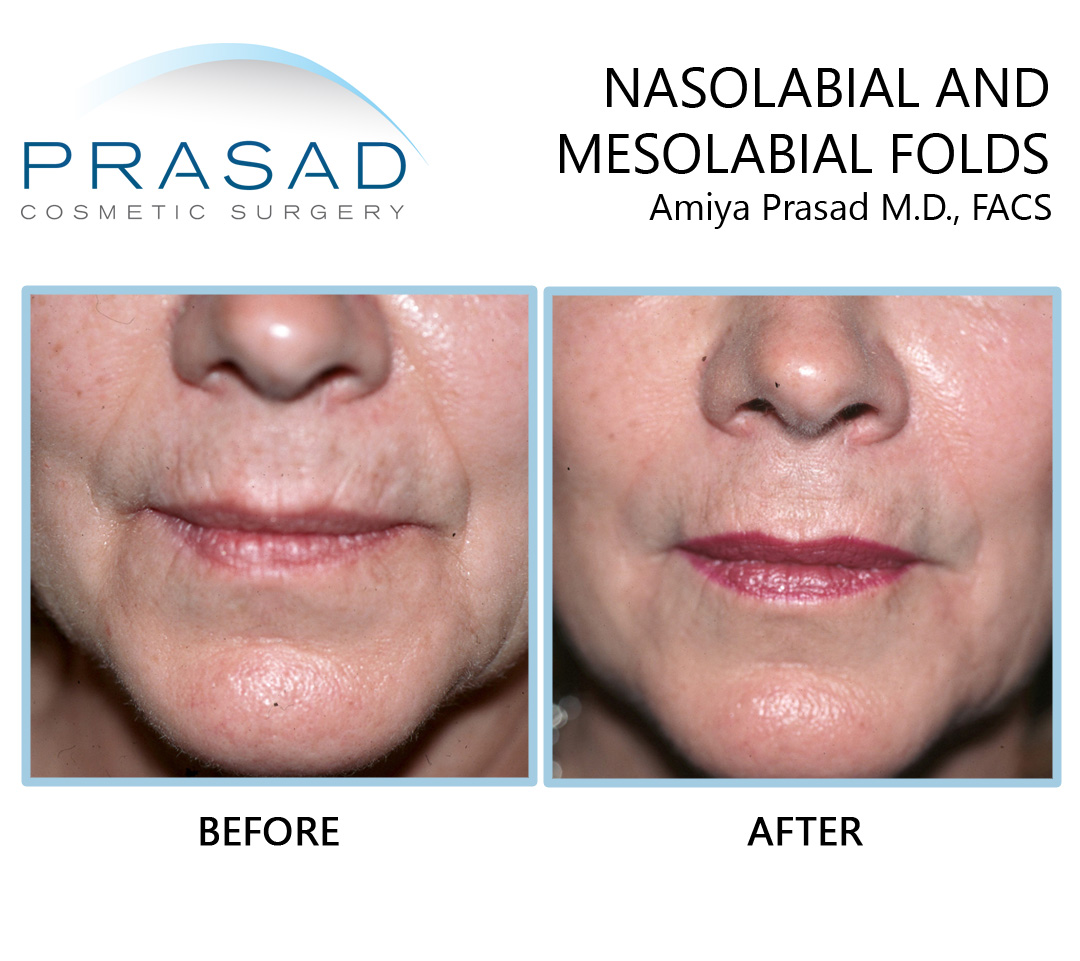
Filler treatments take only minutes to perform to improve fine lines around the mouth. Minimal swelling is expected but can resolves quickly.
Filler Treatments are Not All the Same
In many practices, filler treatment can be administered by non-physicians and doctors who don’t perform surgery (read How to Choose a Doctor for Filler). It’s important to understand that filler treatment is a procedure that requires skill and finesse. Knowledge of surgical techniques is important, especially when placing filler in deeper areas. I do advise patients to meet with doctors who can perform both surgery and filler treatment to get an unbiased recommendation of what will be best for a particular person.
I personally feel that my experience as a cosmetic surgeon has been very useful in achieving outstanding results. My expertise in facial anatomy and a natural aesthetic style allow my patients to have consistently satisfying results with minimal swelling and rarely any bruising. Choosing fillers made of hyaluronic acid are ideal for longevity, safety, and reversibility.
